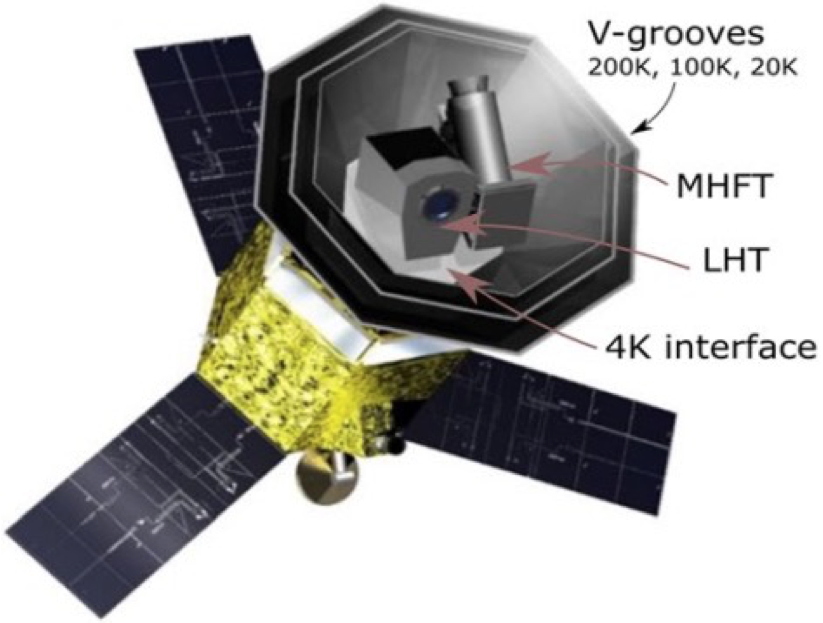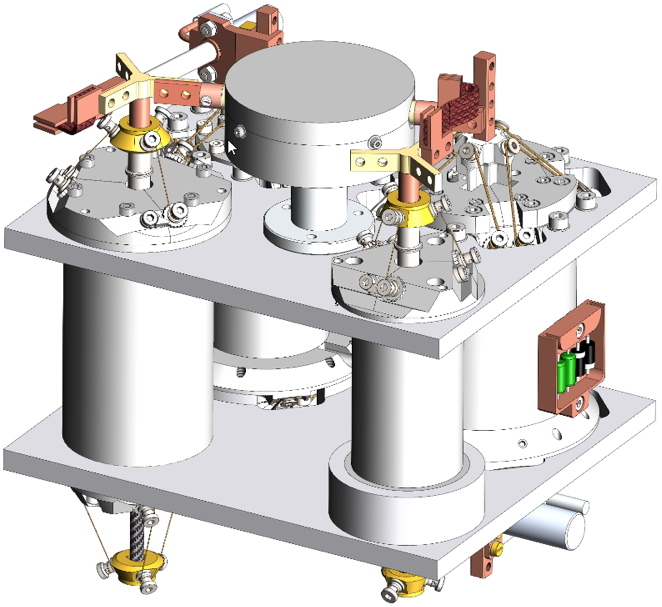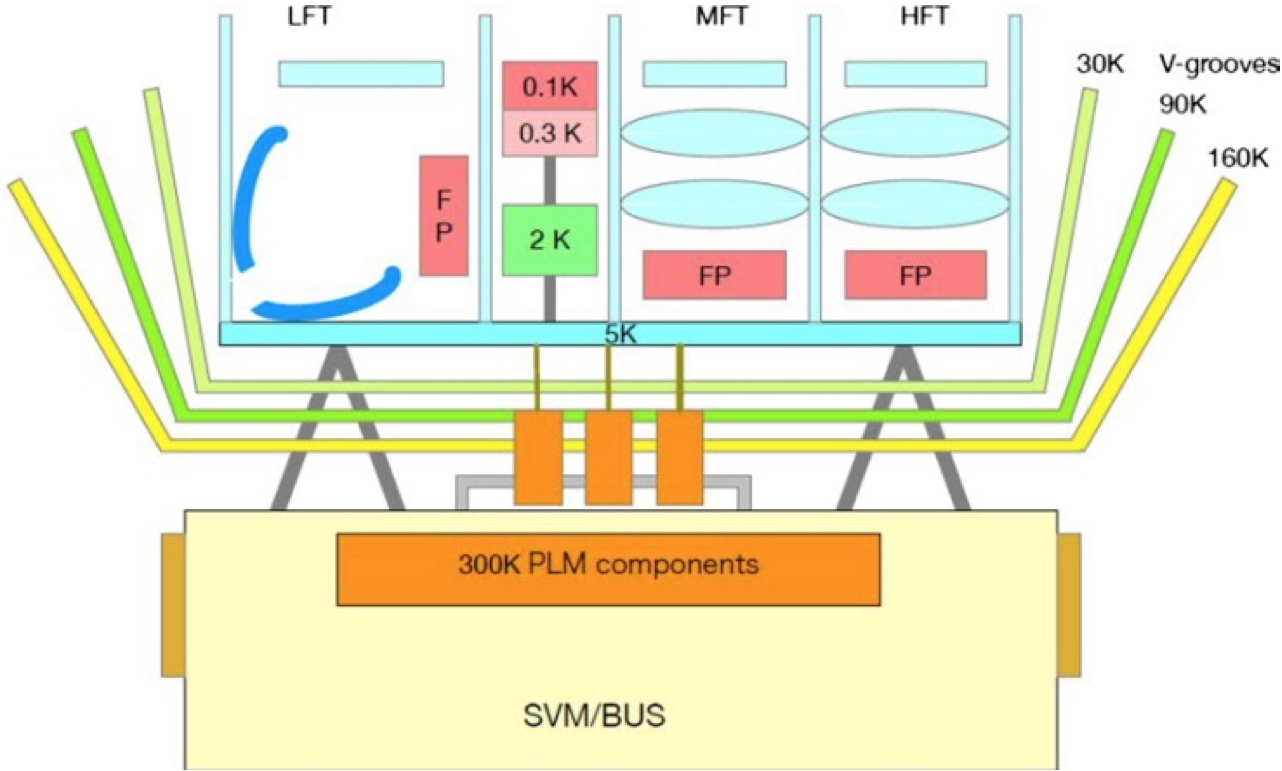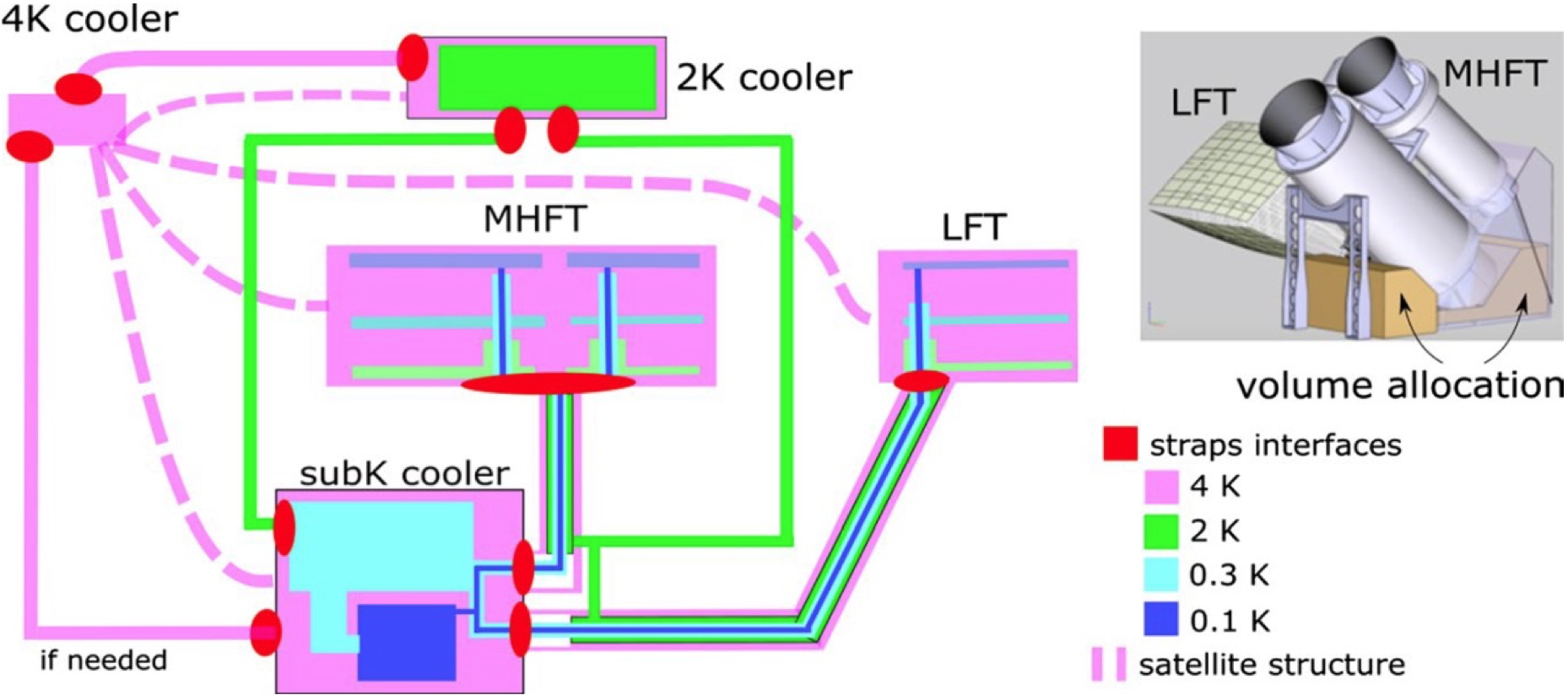In order to better understand the history of our universe, cryogenics at very low temperatures, in this case 100 mK (-273.05 °C), is fundamental in astronomy to cool the detectors and allow the observation of extremely tenuous signals. To maximize detector performance while limiting the complexity of the instrument, it is essential to propose an optimized cryogenic architecture, including the cooler itself, the thermal links and a suitable structure.
LiteBIRD (
Lite satellite for the studies of
B-mode polarization and
Inflation from cosmic background
Radiation
Detection) is a satellite project dedicated to measuring the polarization of the cosmic background. This measure is fundamental to understand the first moments of our universe, just after the big bang. The hypothesis of a phase of rapid increase in the size of the universe, called inflation, could be validated - or not - and refined by an observation of this polarization. The use of a space telescope will allow measurements on large angular scales, inaccessible from Earth. During its mission, scheduled to last at least three years, LiteBIRD will measure the light from the first moments of the universe nearly 14 billion years ago. To differentiate among the disturbances encountered by light during this long travel, measurements will be made on more than 15 wavelengths (from 34 GHz to 448 GHz). To do this, two instruments will be on board (Image below). First the LFT (Low Frequency Telescope) under the responsibility of JAXA, the Japanese space agency, which is also responsible for the satellite as a whole.

The Lite BIRD satellite will bring together Japan, Europe and North America.
Europe will then provide the MHFT (Medium and High Frequency Telescope), under the responsibility of CNES (Centre national d'études spatiales). The latter has in fact recently agreed to take responsibility for the instrument, giving a major role to the French contribution. The instruments will be based on a cryogenic chain integrated into the satellite that will provide initial cooling levels down to 4 Kelvin. To reach the required sensitivity of 100 mK, the detectors will need to be cooled to very low temperatures. The last components of this cooling chain, based on the principle of adiabatic demagnetization, will then be supplied by NASA for cooling from 4 K to 2 K, and finally by the IRIG-DSBT for the 2 K - 100 mK part. In addition, the DSBT's expertise on very low temperature instruments allows it to be involved at the heart of the cryogenic architecture of the LiteBIRD project while being responsible for very low temperature concepts.
The cooler developed by the DSBT (Image below) and selected to equip the two instruments of this project is a so-called "SubKelvin" cooler, particularly adapted to the LiteBIRD architecture.

It is based on a succession of four stages of adiabatic demagnetization. This technique, well adapted to low temperatures and space applications, is also called magnetic refrigeration; cold production is obtained through variations in magnetic fields applied to magneto-caloric materials. The constraints encountered will be to be able to dissipate the heat from the instruments over distances approaching one meter, while limiting the heat input linked to the mechanical supports. The mass constraints embarked on the satellites led the DSBT to develop and synthesize a new paramagnetic material in partnership with researchers from the Pheliqs laboratory of our institute. This material, Ytterbium Gallium Garnet, offers an unrivalled magnetocaloric production capacity of between 2 K and 300 mK. The expertise and knowledge in crystallogenesis of the Pheliqs researchers were decisive in the development and production of this cooler.
 Diagram showing the thermal connections at the payload starting from 4 K.
Diagram showing the thermal connections at the payload starting from 4 K. Cryogenic chain and thermal paths showing the thermal connections between the two instruments and the two coolers. On the right, the space available for the two coolers between the telescopes.
Cryogenic chain and thermal paths showing the thermal connections between the two instruments and the two coolers. On the right, the space available for the two coolers between the telescopes.